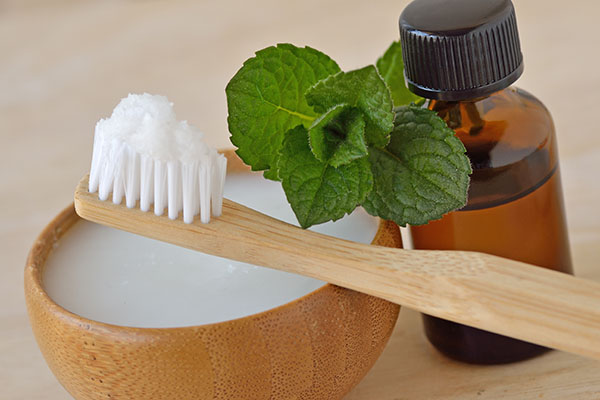 Parler
Parler Gab
Gab
Maintaining proper hygiene is crucial in a survival scenario
Whether things are normal or you are living in a post-SHTF world, you should maintain personal hygiene because of the following reasons:Proper hygiene can help prevent the spread of diseases
In a survival situation, access to medical facilities may be limited. This means you need to be careful so you don't get sick and cause infections in the first place. After disaster strikes, you can prevent the spread of germs and bacteria by washing your hands frequently, keeping wounds clean and brushing your teeth regularly.Good personal hygiene can help boost morale and mental health
When you're in a stressful and challenging situation, like a long-term power outage, you also need to take care of your mental health. Maintaining good personal hygiene can help boost your self-confidence, reduce stress levels and improve your overall mood.Maintaining good personal hygiene can help prevent insect bites and infections
If you are bugging out after SHTF, you can get sick if you get bitten by fleas, mosquitoes or ticks. These pests can carry diseases, so maintaining good personal hygiene can help reduce your risk of being bitten. Showering, washing your face and wearing clean clothing can also help prevent infections from occurring.Personal hygiene can help increase your chance of survival by making you less attractive to predators
Wild animals are attracted to the smell of sweat, urine and feces. Maintaining good personal hygiene can help reduce these odors and make you less appealing to predators. When SHTF, you must have a backup plan in case you run out of supplies for personal hygiene. This is when knowing how to make your own personal hygiene products comes in handy. For example, even if you run out of toothpaste, you can keep your teeth clean with a DIY toothpaste.Making DIY personal hygiene items
Coconut oil is a crucial ingredient for many personal hygiene items because it has amazing antimicrobial properties, making it a great base for various items. To take advantage of this benefit, use organic, unrefined coconut oil or expeller-pressed oil if you don’t want the product to smell like coconut. Despite its cost, the health advantages of coconut oil are worth it if you have money to spare. The homemade products listed below are chemical-free and offer many health benefits. They can also reduce your dependence on commercial products which may contain harmful ingredients.Antiseptic ointment
You need an antiseptic ointment in your survival kit. This ointment has antibacterial, antifungal, antiviral and analgesic properties. You will need:- 2 ounces of beeswax
- 1 ounce of jojoba oil
- 1 cup of coconut or almond oil
- 1/2 teaspoon of tea tree oil
- 1/2 teaspoon of vitamin E oil
- 24 drops of lavender essential oil
- 12 drops of lemon essential oil
- Combine all the ingredients. You can use a double boiler to warm the mixture slightly to liquefy the mixture so the oils meld.
- Store the ointment in an airtight tin or jar.
Body lotion
This body lotion bar is similar to soap but leaves a nice layer of moisturizer on your skin when applied. You will need:- 1/3 cup of beeswax
- 1/3 cup of coconut oil
- 1/3 cup of shea, mango, cocoa, kokum or illipe butter (you can also use a combination of these ingredients)
- 1 teaspoon of vitamin E oil
- Several drops of your favorite essential oil
- Heat all the ingredients in a glass jar placed in a pan of warm water.
- Pour the melted mixture into molds. Set aside and let cool before removing and storing the products.
Deodorant
Deodorant may seem like a luxury, but it is essential for maintaining good hygiene. This homemade deodorant recipe uses coconut oil and is highly effective in controlling underarm odor because of coconut oil's antimicrobial properties, which help fight odor-causing bacteria. You will need:- 1/4 cup arrowroot powder or cornstarch
- 1/4 cup baking soda
- 7 tablespoons of coconut oil
- Mix all the ingredients until you get a nice thick paste, similar to a store-bought deodorant.
- Store the mixture in a jar or other container.
Lip balm
You need a soothing sunscreen lip balm in a survival scenario, especially if the weather is very hot and dry or if you have dry lips. Exposure to the sun can cause chapped lips, so you need a natural lip balm that will moisturize and protect your lips. You will need:- 3 tablespoons of coconut oil
- 1 tablespoon of shea butter
- 3 drops of lemon oil
- 3 drops of tea tree oil
- To make the lip balm, combine all the ingredients in a small jar or tin can. Mix well.
- Store the airtight container in a cool, dry place and apply as needed.
Toothpaste
Homemade toothpaste is highly effective in maintaining proper oral hygiene. Salt is a great disinfectant and can be used to naturally remove food particles and buildup from your teeth. You will need:- 1/3 cup baking soda
- 2 tablespoons of water
- 1 teaspoon unrefined sea salt
- 1 teaspoon peppermint extract
- Combine all the ingredients. Mix until you have something with the consistency of a toothpaste.
- Store the DIY toothpaste in an airtight tin or jar. Use it like you would regular toothpaste.
Plants that are high in saponins
Saponins are natural plant compounds that can dissolve in water and latch to oils. Saponins, along with the oil, can be washed away by water. (Related: SHTF sanitation and hygiene: 5 Plants that you can use as soap.) After SHTF, you can use saponins to cleanse your skin, hair and home. Forage or grow the following saponin-rich plants then cut some leaves or flowers so you can use them as ingredients:Buffaloberry
Buffaloberry (Shepherdia argentea) shrubs grow in the western and northwestern U.S. and Canada. Buffaloberry, like most saponin-rich plants, can give you an upset stomach so don't eat the berries. Mash the fresh berries together on their own or with water to make a natural cleanser for your face or body.Clematis
Clematis is a beautiful climbing plant that you may already have in your garden. Collect both its leaves and flowers, then chop and soak them in warm water. Use one part plant material per two parts warm water. Use as you would warm soapy water on floors and other surfaces.Soapweed yucca
Soapweed yucca (Yucca glauca) is a wild soap plant native to the prairies and great plains of North America. This plant has high amounts of saponin in its roots, which you can crush and either soak or simmer in water. Use the bubbly and foamy liquid as a natural shampoo and cleanser. Harvesting plants for their roots will kill them. If you want to use soap plants sustainably, harvest those that are invasive. Visit Survival.news for more stories like this. Watch the video below for a quick guide on how to wash your hands thoroughly. This video is from the Daily Videos channel on Brighteon.com.More related stories:
Post-SHTF hygiene: 11 Plants that can be used as soap. Prepper tips: 10 Ways to maintain oral hygiene in the wilderness. 3 DIY toothpaste recipes for optimal oral health and hygiene. Sources include: PreppersWill.com LovelyGreens.com Brighteon.comFood supply tips: How to forage for edible nuts for your survival stockpile
By Zoey Sky // Share
Follow these steps if you want to survive the 2023 banking system collapse
By Mike Adams // Share
Northern Aussie bases get extra $3.8B funding for “potential conflict” (with China)
By Ramon Tomey // Share
Fruit of known invasive weed found to boost collagen production, prevent skin aging
By Zoey Sky // Share
Survival essentials: 5 Bushcraft skills for preppers
By Zoey Sky // Share
Governments continue to obscure COVID-19 vaccine data amid rising concerns over excess deaths
By patricklewis // Share
Tech giant Microsoft backs EXTINCTION with its support of carbon capture programs
By ramontomeydw // Share
Germany to resume arms exports to Israel despite repeated ceasefire violations
By isabelle // Share










